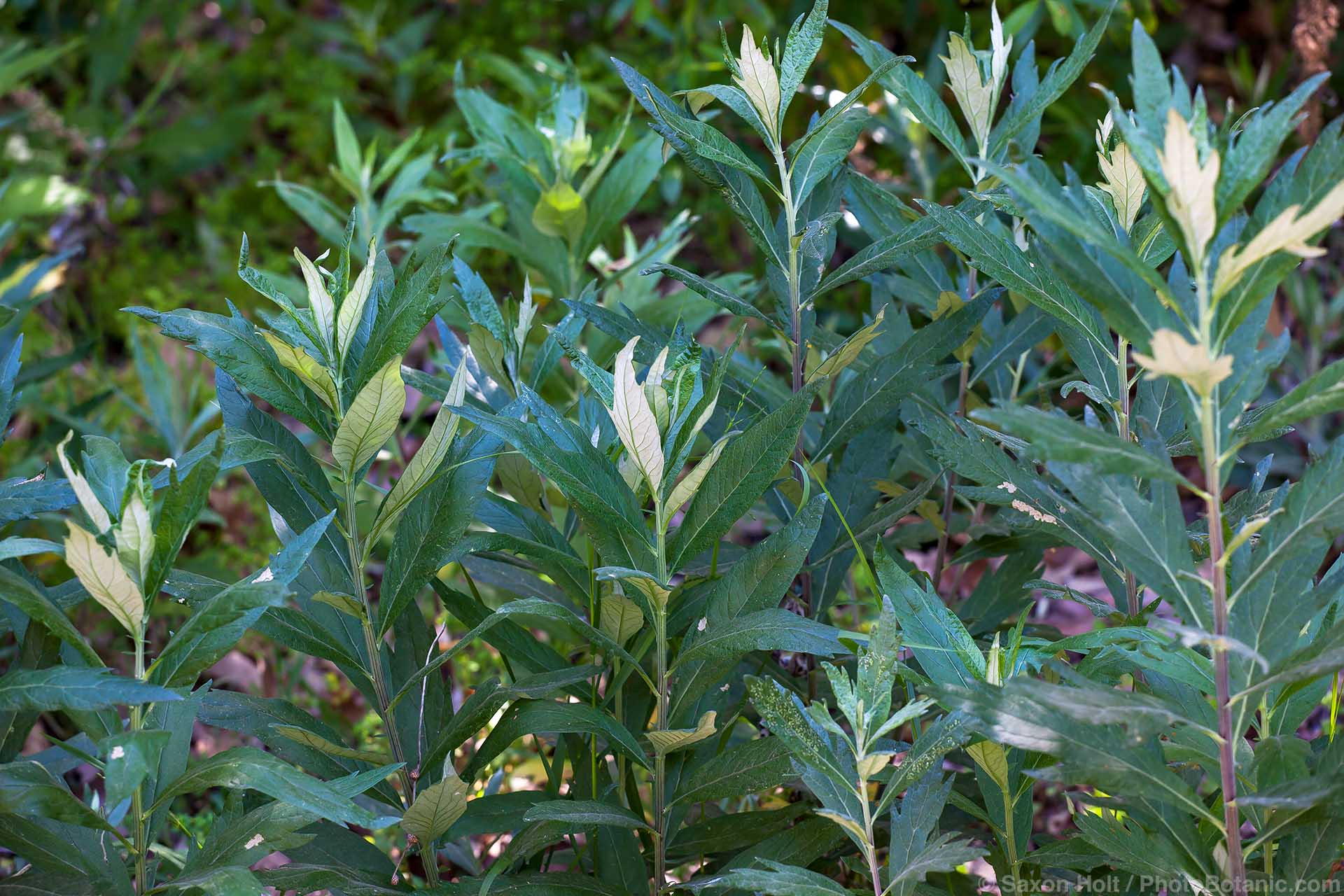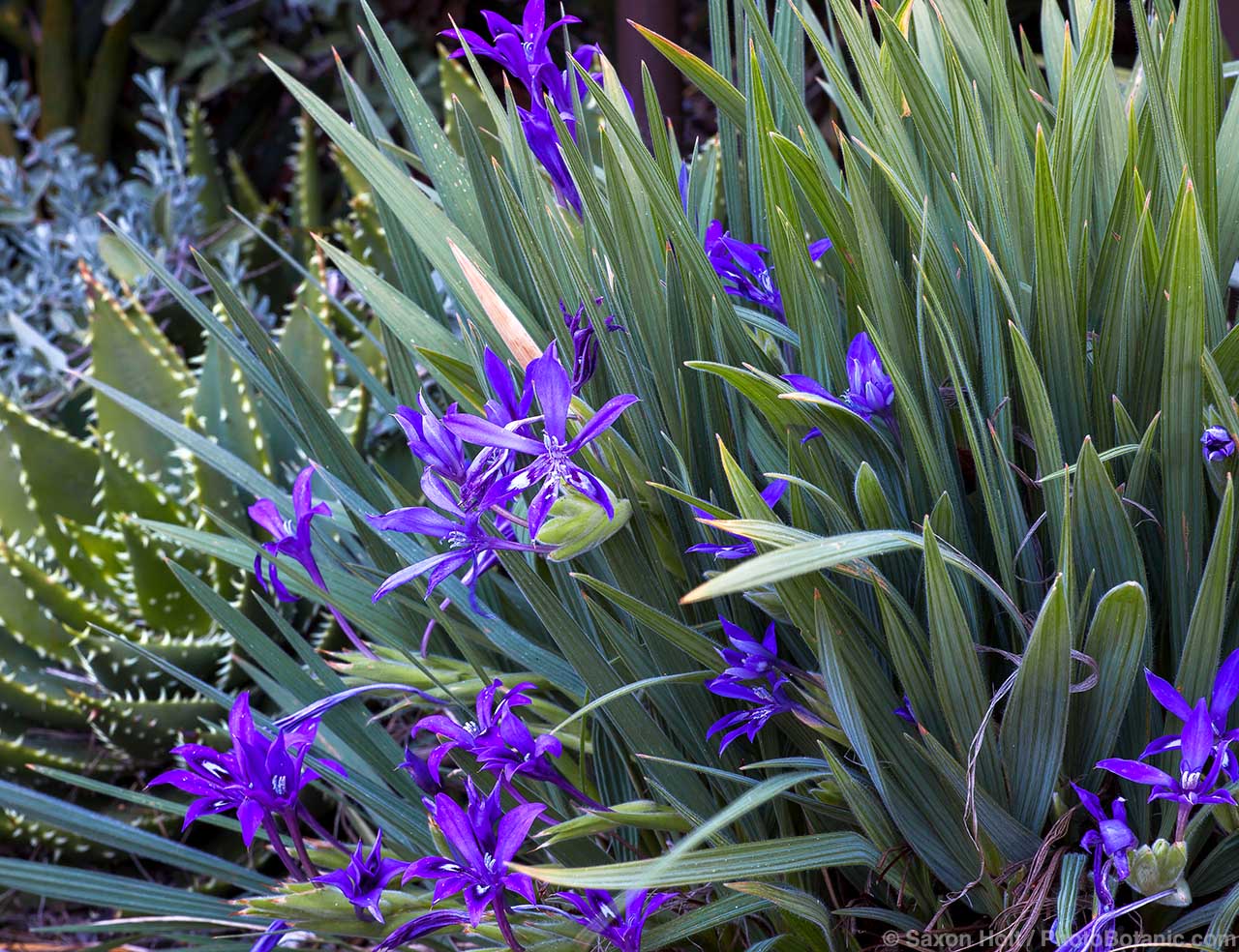Bulbines and Bulbinellas
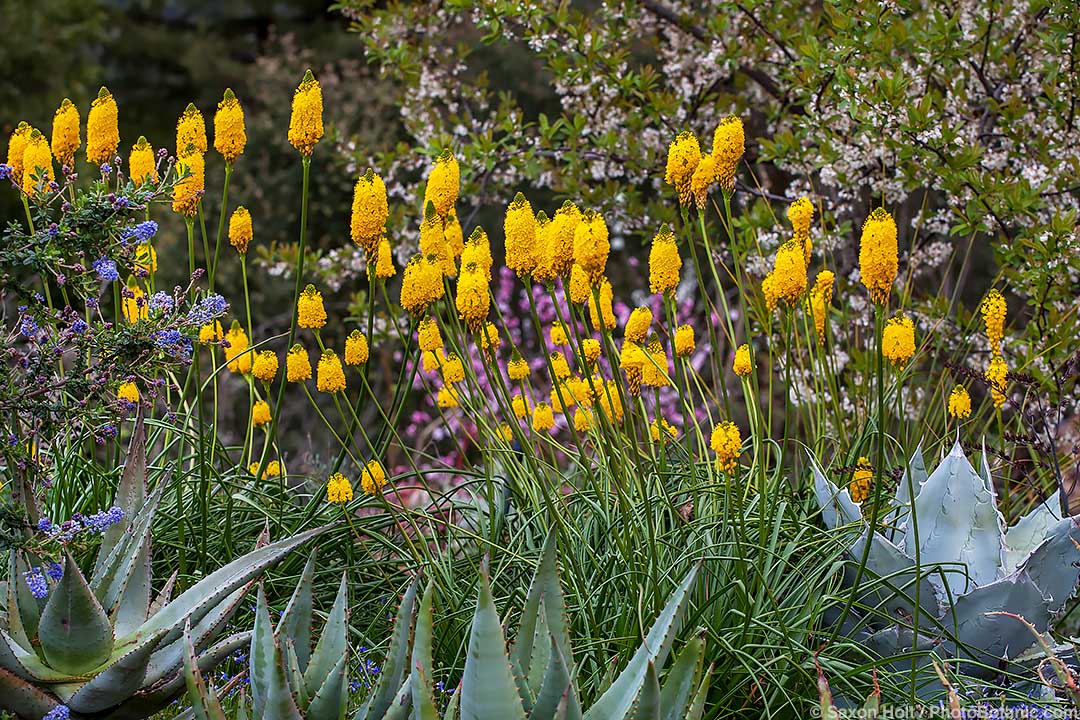
Share This!
It is perhaps not surprising that bulbines and bulbinellas are often mistaken for one another. Both form clumps or rosettes of grasslike or straplike basal leaves and both bear tiny, star-shaped, yellow, orange, or white flowers in cylindrical or cone-shaped clusters atop tall stems. Most of both genera are native to South Africa with a few bulbines from Australia and a few bulbinellas from New Zealand.
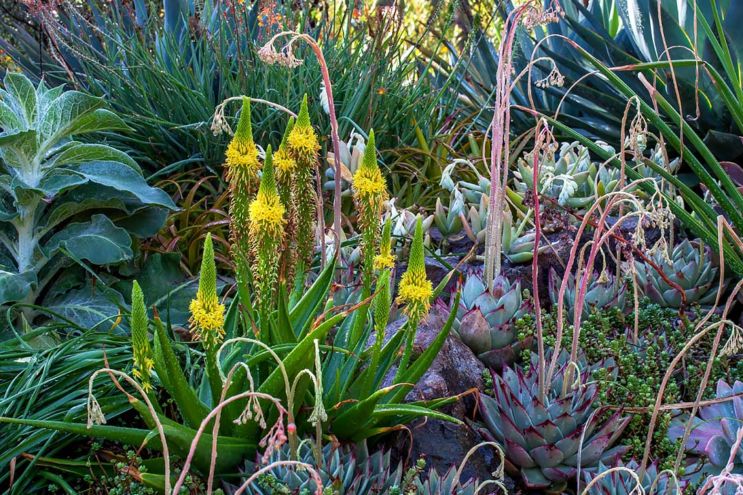
Bulbine latifolia has succulent leaves resembling an aloe without spines
There are, however, significant differences between the two that may affect how they are used in the garden. Almost all bulbines have succulent leaves. Leaves of some bulbinellas are slightly fleshy, but no bulbinellas are truly succulent. Some bulbines are deciduous, but most are evergreen in mild-winter climates. Most bulbinellas are dormant and many are fully deciduous in summer drought.
Although there are exceptions, most bulbinellas flower in late winter and early spring, sometimes extending into summer. Most bulbines flower in late spring and summer, sometimes extending into fall or reblooming in fall after a heat-induced pause.
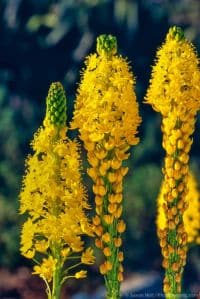
Flowers of Bulbinella robusta
The upright inflorescences of bulbinellas tend to be densely packed with tiny flowers while bulbine flower clusters are usually more open and airy.
Bulbine flowers have noticeably hairy stamens, giving the center of each flower a fluffy appearance not present in bulbinellas.
Both bulbinellas and bulbines are good candidates for low-water landscapes. Most bulbinellas prefer a dry summer dormancy once they die back. Bulbines may need occasional summer water. Good drainage is essential for both.
The confusion surrounding the two genera derives in part from the fluidity of their taxonomic status. Formerly placed in the lily family, both bulbines and bulbinellas are now considered members of the Asphodelaceae along with red-hot poker (Kniphofia), which they superficially resemble. Many species have been moved to other genera, synonyms are common, and different species may be similar in name or in observable traits.
Of the 23 bulbinella species, those most often available commercially, either as plants or as seed, include Bulbinella angustifolia and B. hookeri, both native to damp grasslands of New Zealand and both with narrow, upright leaves and yellow flowers. These two are similar, and B. angustifolia is sometimes considered a variety of B. hookeri.
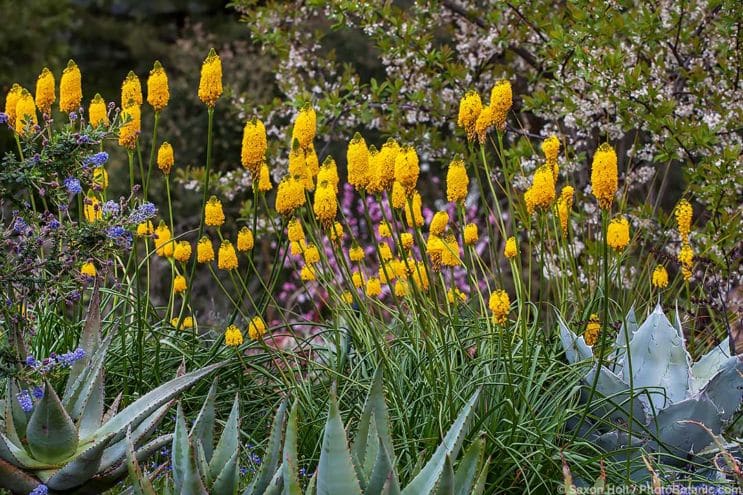
Bulbinella nutans has narrow, grasslike leaves that die back in summer
Bulbinella nutans and B. latifolia are native to seasonally damp places in winter-rainfall parts of the Western Cape. Both have grasslike leaves and yellow flowers in late winter or early spring. Dormant and deciduous in summer, they are adaptable and easy where conditions are right. B. nutans is sometimes offered as B. floribunda, an earlier name. B. nutans var. nutans is often offered as B. robusta, and B. latifolia var. latifolia is often available as B. natalensis.
Of the more than 70 bulbine species, the one most common in the horticultural trade is Bulbine frutescens, stalked bulbine, a South African native with narrow, succulent leaves and yellow or orange flowers in late spring and again in fall.
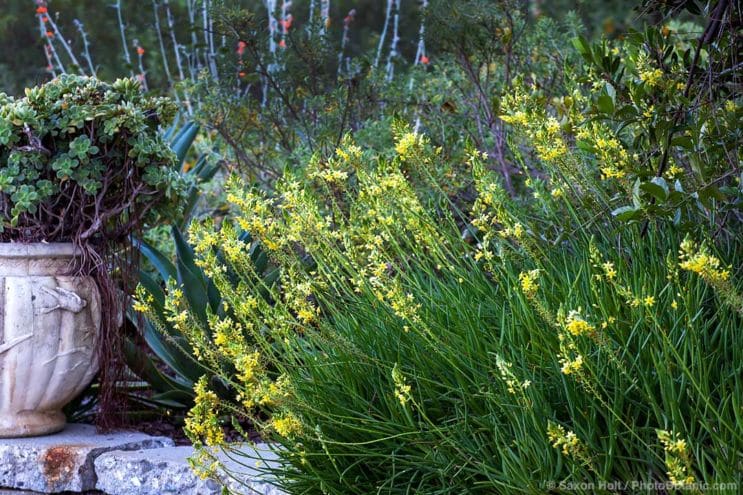
Bulbine frutescens, stalked bulbine, yellow-flowered form
Spreading 3-4 feet wide or more, Bulbine frutescens is often used as a small-scale groundcover and has long been used in traditional medicine. Applied topically to cuts, burns, and rashes in a manner similar to Aloe vera, the gel from its leaves is marketed under the common name of — bulbinella. . .
Share This!
Related Articles
By: Nora Harlow
By: Nora Harlow
By: Nora Harlow



